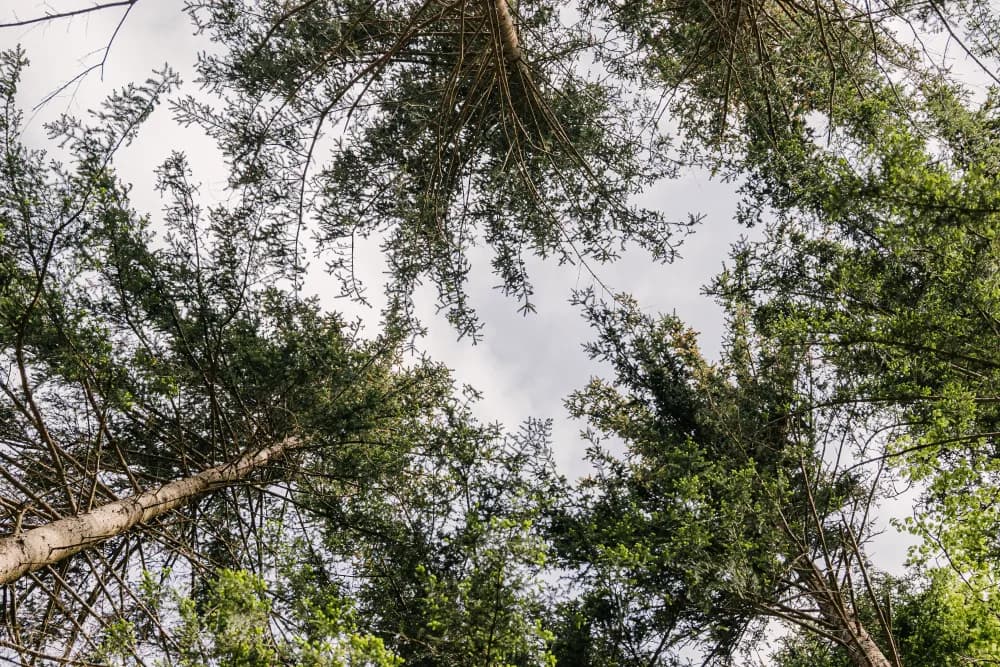Broadly speaking, ecosystem services encompass everything from soil fertility to pollination to recreation. Together, they make human life possible. These services are being increasingly appreciated, but as the FAO states, “despite an estimated value of $125 trillion, these assets are not adequately accounted for in political and economic policy.”
A big part of Tree.ly’s mission is finally compensating forests (and by extension forest owners) for the valuable ecosystem services they provide. What are these “services”, and how are they compensated?
What exactly are the ecosystem services of a forest?
Forests do far more than just provide humans with raw materials. A forest’s ecosystem services include among other things:
-
preserving biodiversity as home to numerous species;
-
sequestering carbon and mitigating climate change;
-
conserving soil and preventing land degradation;
-
acting as water filters and preventing floods;
-
serving as places of recreation and leisure.

Source: Earth Observation Based Monitoring of Forests in Germany: A Review
In mountainous areas, so-called protective forests serve a further crucial role: protecting human infrastructure. Indeed, BOKU research shows that 1 euro invested in a forest has the same protection quality as 150 euros of technical solutions (avalanche protection, concrete reinforcement, etc). In Austria, this is divided into Objektschutzwald (human infrastructure protection) and Standortschutzwald (protecting the location’s soil habitat from erosion and degrading).
But it’s not enough to simply recognise ecosystem services as such. To make a real difference, these need to be quantified and measured. This is where Tree.ly really comes into its own.
How we're quantifying Europe’s forests
Tree.ly is merging the finest age-old nature-based solution with the very latest technology to build the most accurate models ever constructed of Europe’s forests. Our technical team uses science-based technological solutions - drone imaging, lidar, satellite imaging, ortho-photography and more – to reach these exact measurements of a forest’s ecosystem services. This is ultimately monetized and matched with partners on the carbon markets willing to pay.
At present this consists primarily of evaluating the photosynthetic value of a forest – the process by which carbon is stored. In tropical forests, similar instruments have existed since 2008, but European forests owners have not been compensated for this valuable ecosystem service – until now.
A forest stock is analysed, taking into account factors such as tree species, altitude, tree age, and more, to reach an accurate estimation of its carbon capture capabilities over time. For example, the largest forest owner in Vorarlberg (Austria) includes 6,470 ha, an analysis foresees a creditable carbon sink performance of ~353,000 tonnes of CO₂ in 30 years, or ~11,000 tonnes of CO₂ per year for 30 years.
Once quantified, the concept of additionality is crucial in turning this into a carbon market asset. This way, foresters are finally recognized for the valuable work they have done for centuries. What’s more, as part of their agreements with Tree.ly the forest owner agrees to reinvest all profits back into the forest, ensuring its ecosystem services continue far into the future.
CO₂ and beyond
As well as forests’ carbon capture potential, Tree.ly’s technical team is actively working on solutions to measure and quantify other vital factors such as water filtration and biodiversity, bird species etc. In the coming years, this will make our platform the most comprehensive compendium of European forests ever created.
Find out more and explore our ever-growing portfolio here: https://tree.ly/portfolio



